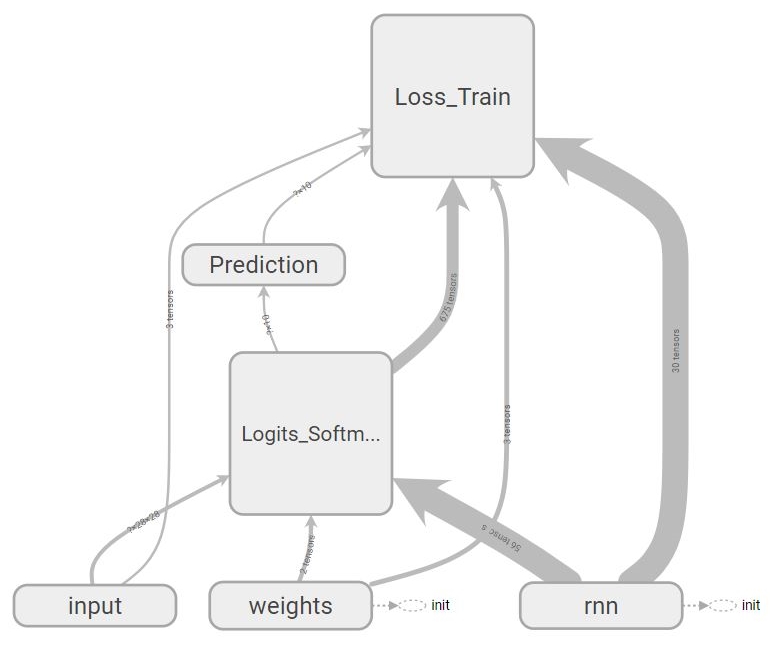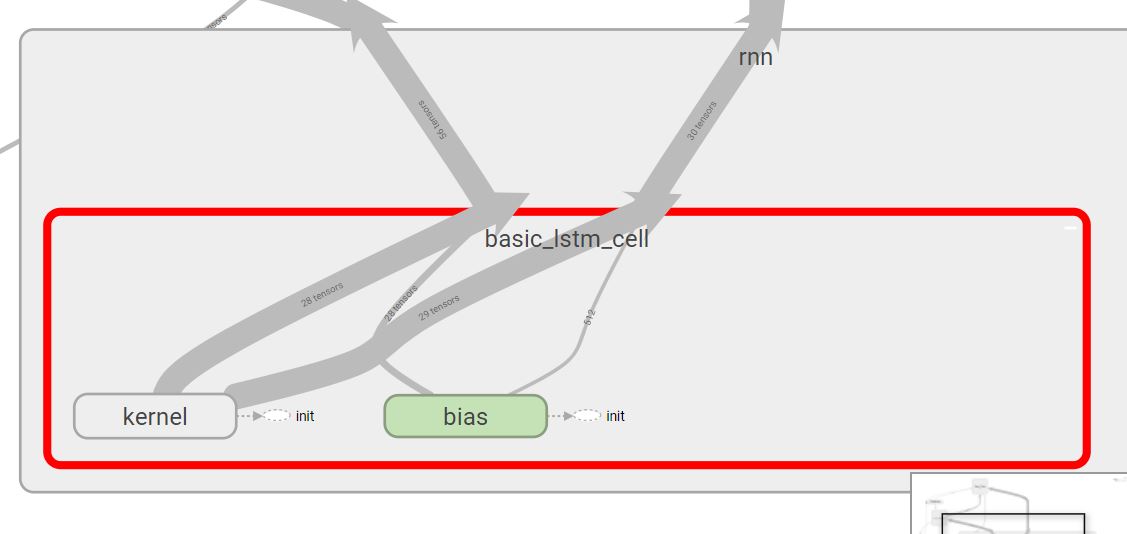RNN for data augmentation
An RNN models sequences, in this case, words. It analyzes anything in a sequence, including images. To speed the mind-dataset process up, data augmentation can be applied here exactly as it is to images in other models. In this case, an RNN will be applied to words.
A first look at its graph data flow structure shows that an RNN is a neural network like the others previously explored. The following graphs were obtained by first running LSTM.py and then Tensorboard_reader.py:

Data flow structure
The y inputs (test data) go to the loss function (Loss_train) . The x inputs (training data) will be transformed through weights and biases into logits with a softmax function. A zoom into the RNN area of the graph shows the following basic_lstm cell:

basic_lstm cell—RNN area of the graph
What makes an RNN special is to be found in the LSTM cell.
RNNs and LSTMs
An LSTM is an RNN that best shows how RNNs work.
An RNN contains functions that take the output of a layer and feed it...































































